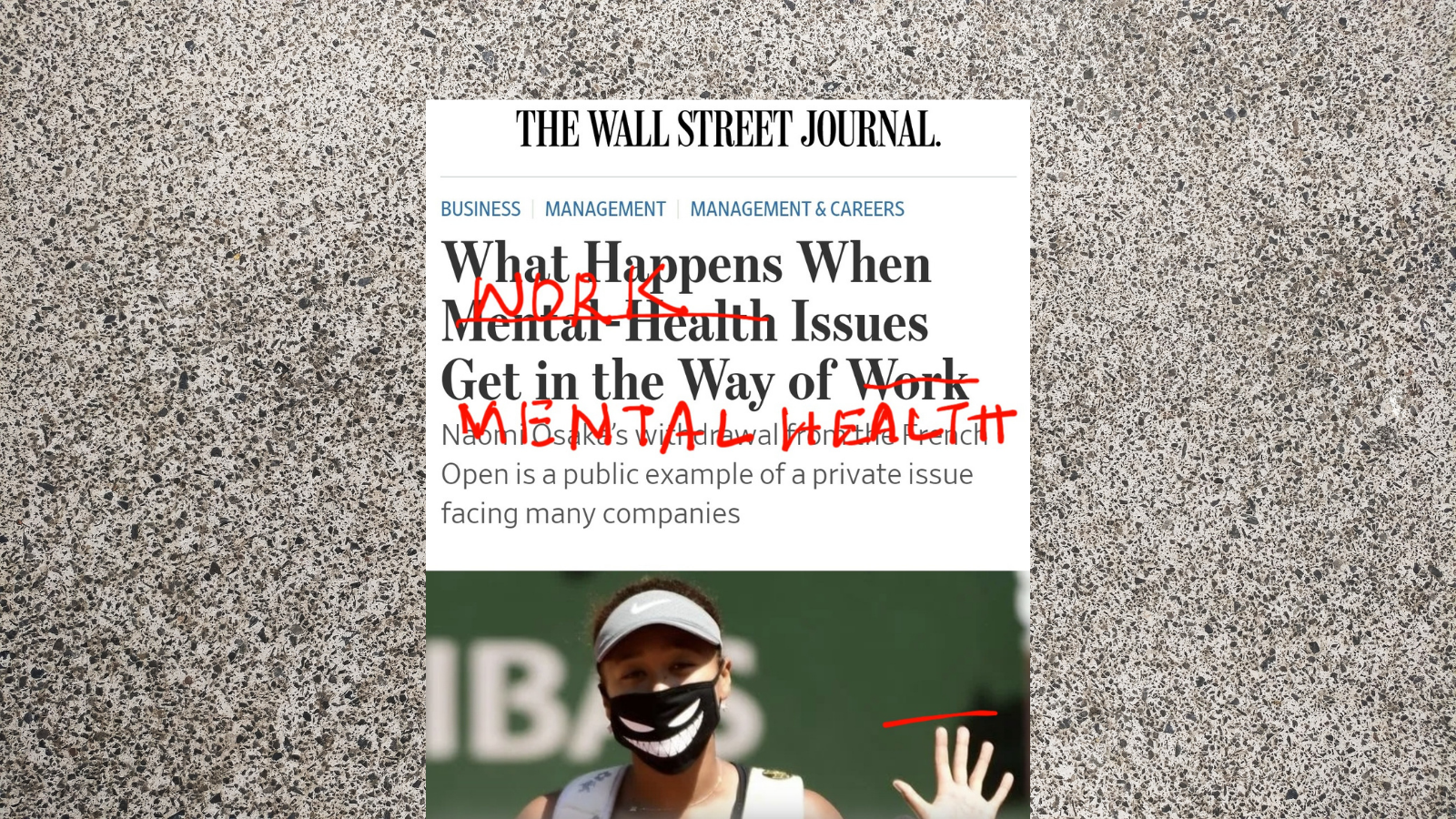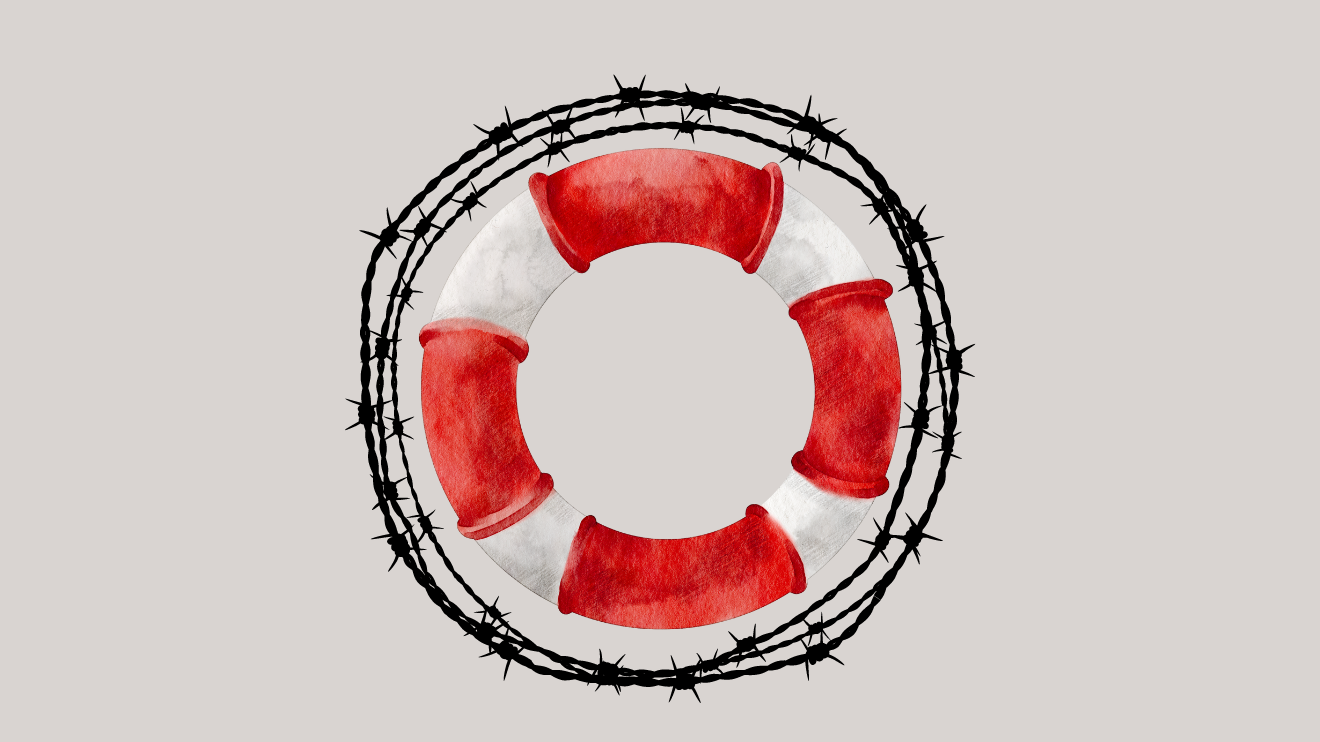
Challenging workplace mental health's TINA factor
We are talking more than ever about workplace mental health, but we have no clue how to talk about it. Little wonder we can't go beyond the 'productivity' trap. Let's partner to change that.
My most popular tweet from 2021 (read: my most popular tweet ever) wasn't about a story I wrote. It was a screenshot of a Wall Street Journal headline about tennis star Naomi Osaka's mental health crisis that I'd hastily edited on my phone.
"What happens when mental-health issues get in the way of work?" the original headline read.
"What happens when work gets in the way of mental health issues?" went my edited version.
I had no idea this little tweak made in a moment of frustration would blow up the way it did. At last count, that one tweet had received over 2 million impressions, nearly 7,000 retweets, and some 34,000 likes. On LinkedIn, it triggered another 5,500 reactions. Even on Instagram, where practically no one follows me, it fetched almost 2,000 likes.
Field day for a content creator? Not so much. When I realised the image had gone viral, with a nonstop flood of notifications for days, I felt dejected.
Beyond a point, the outburst of support from people who were angry that yet another media giant had described mental health as an inconvenience for work didn't make me feel good.
It made me feel empty and exhausted.


